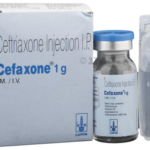Levofla: Uses, Dosage, Side Effects, Interactions

Levofla is a brand of Levofloxacin, a medication used to treat certain infections such as pneumonia, kidney, prostate (a male reproductive gland), and skin infections. Levofla is also used to prevent anthrax (a serious infection that may be spread on purpose as part of a bioterror attack) in people who may have been exposed to anthrax germs in the air, and treat and prevent plague (a serious infection that may be spread on purpose as part of a bioterror attack). Levofla may also be used to treat bronchitis, sinus infections, or urinary tract infections but should not be used for bronchitis and certain types of urinary tract infections if there are other treatment options available. Levofla is in a class of antibiotics called fluoroquinolones. It works by killing bacteria that cause infections.
Levofla is also sometimes used to treat endocarditis (infection of the heart lining and valves), certain sexually transmitted diseases, salmonella (an infection that causes severe diarrhea), shigella (an infection that causes severe diarrhea), inhalation anthrax (a serious infection that may be spread by anthrax germs in the air on purpose as part of a bioterror attack), and tuberculosis (TB). Levofla is also sometimes used to prevent or treat traveler’s diarrhea. Talk to your doctor about the risks of using this medication for your condition.
This medication may be prescribed for other uses; ask your doctor or pharmacist for more information.
How should I take Levofla?
Levofla comes as a tablet and a solution (liquid) to take by mouth. It is usually taken once a day. The length of your treatment depends on the type of infection you have. Your doctor will tell you how long to take Levofla. The tablet may be taken with or without food. The solution should be taken 1 hour before or 2 hours after eating. Take Levofla at around the same time every day.
Typical dosing for levofloxacin
Adults: The typical dose is 250 mg, 500 mg, or 750 mg, taken by mouth every 24 hours. The strength given and the amount of time you take levofloxacin depends on the type of infection you have.
Children, ages 6 months and older: Levofla should only be used in children for plague or prevention of anthrax. The dose is based on the child’s weight.
50 kg (110 lb) or more: Take 500 mg by mouth every 24 hours.
Children who weigh between 30 kg (66 lb) to 50 kg (110 lb) and can swallow pills: Take 250 mg by mouth every 12 hours.
Children who weigh less than 50 kg (110 lb) and cannot swallow pills: Take 8 mg/kg of the liquid version by mouth every 12 hours. The maximum you should take per dose is 250 mg.
Follow the directions on your prescription label carefully, and ask your doctor or pharmacist to explain any part you do not understand. Take Levofla exactly as directed. Do not take more or less of it or take it more often than prescribed by your doctor.
You should begin to feel better during the first few days of treatment with Levofla. If your symptoms do not improve or if they get worse, call your doctor.
Take Levofla until you finish the prescription, even if you feel better. Do not stop taking Levofla without talking to your doctor unless you experience certain serious side effects. If you stop taking Levofla too soon or skip doses, your infection may not be completely treated and the bacteria may become resistant to antibiotics.
Is Levofla safe to take if I’m pregnant or breastfeeding?
No, Levofla is not recommended for use in pregnant women since Levofla causes joint and bone deformities in juvenile animals of several species.
What are the side effects of Levofla?
Levofla can cause mild or serious side effects. The following list contains some of the key side effects that may occur while taking Levofla. This list does not include all possible side effects.
For more information on the possible side effects of Levofla, or tips on how to deal with a troubling side effect, talk with your doctor or pharmacist.
More common side effects
Some of the more common side effects of Levofla include:
• nausea
• headache
• diarrhea
• insomnia (trouble sleeping)
• constipation
• dizziness
These effects may go away within a few days or a couple of weeks. If they’re more severe or don’t go away, talk to your doctor or pharmacist.
Serious side effects
Call your doctor right away if you have serious side effects. Call 911 if your symptoms feel life-threatening or if you think you’re having a medical emergency. Serious side effects and their symptoms can include the following:
• Allergic reaction. Symptoms can include:
o hives
o trouble breathing or swallowing
o swelling of your lips, tongue, face
o throat tightness or hoarseness
o fast heart rate
o fainting
o skin rash
• Central nervous system effects. Symptoms can include:
o seizures
o hallucinations (hearing voices, seeing things, or sensing things that aren’t there)
o restlessness
o anxiety
o tremors (uncontrollable rhythmic movement in one part of your body)
o feeling anxious or nervous
o confusion
o depression
o trouble sleeping
o nightmares
o lightheadedness
o paranoia (feeling suspicious)
o suicidal thoughts or actions
o a headache that won’t go away, with or without blurred vision
• Tendon damage, including tendinitis (inflammation of the tendon) and tendon rupture (tear in the tendon). Symptoms can occur in joints such as the knee or elbow and include:
o pain
o reduced ability to move
• Peripheral neuropathy (nerve damage in your hands, feet, arms, or legs). Symptoms typically occur in the hands and feet and can include:
o pain
o numbness
o weakness
• Joint and muscle pain
• Liver damage, which can be fatal. Symptoms can include:
o loss of appetite
o nausea
o vomiting
o fever
o weakness
o tiredness
o itching
o yellowing of your skin and whites of your eyes
o light-colored bowel movements
o pain in your abdomen
o dark-colored urine
• Severe diarrhea caused by the bacteria Clostridium difficile. Symptoms can include:
o watery and bloody stools
o stomach cramps
o fever
• Heart rhythm problems, such as prolongation of the QT interval. Symptoms can include:
o irregular heart rhythm
o loss of consciousness
• Increased sensitivity to the sun. Symptoms can include sunburn on the skin
Which drugs or supplements interact with Levofla?
• Iron, calcium, zinc, or magnesium can attach to Levofla and other fluoroquinolones and prevent their absorption from the intestine into the blood. Therefore, products (for example, antacids) that contain iron, calcium, zinc, or magnesium should be taken at least 2 hours before or 2 hours after Levofla. Other drugs that contain these minerals and can similarly interact with Levofla include sucralfate (Carafate) and didanosine (Videx, Videx EC).
• Taking nonsteroidal anti-inflammatory drugs (NSAIDs) with Levofla may increase the risk of central nervous stimulation, resulting in over-excitation. There have been reports of changes in blood sugar (increases and decreases) in patients treated with fluoroquinolones and antidiabetic agents.
• Fluoroquinolones may increase the effect of warfarin (Coumadin, Jantoven).





